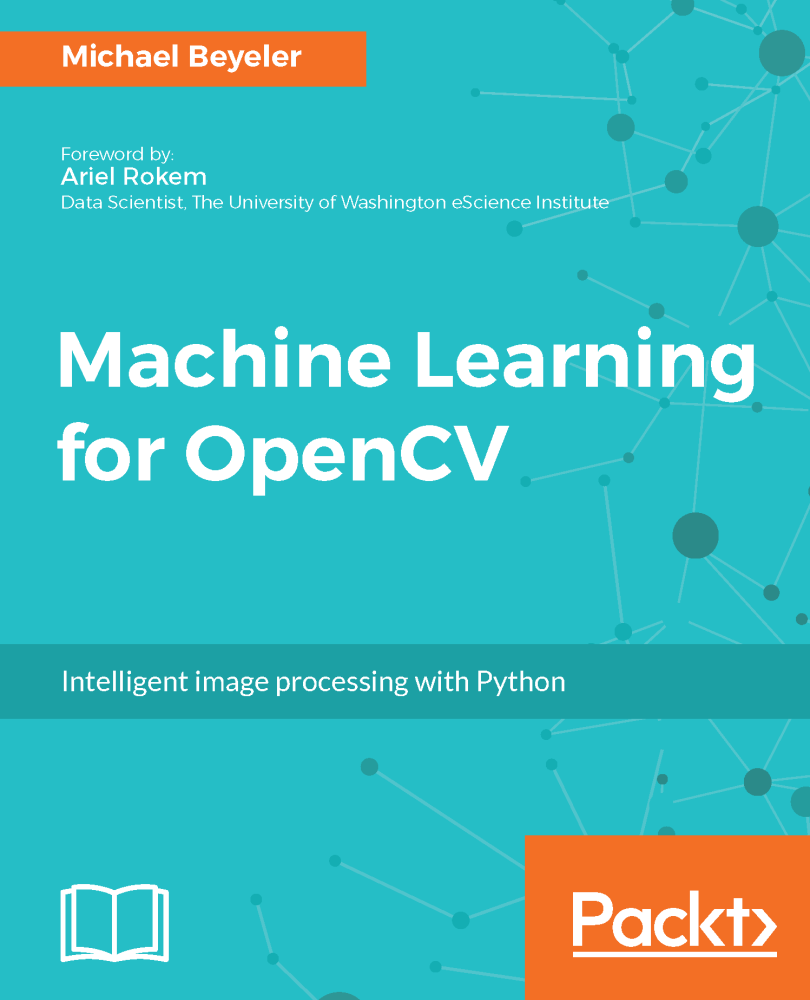If you enjoyed this book, you may be interested in these other books by Packt:
Mastering OpenCV 3 Daniel Lelis Baggio, Shervin Emami, David Millán Escrivá, Khvedchenia Ievgen, Jason Saragih, Roy Shilkrot
ISBN: 978-1-78646-717-1
- Execute basic image processing operations and cartoonify an image
- Build an OpenCV project natively with Raspberry Pi and cross-compile it for Raspberry Pi.text
- Extend the natural feature tracking algorithm to support the tracking of multiple image targets on a video
- Use OpenCV 3’s new 3D visualization framework to illustrate the 3D scene geometry
- Create an application for Automatic Number Plate Recognition (ANPR) using a support vector machine and Artificial Neural Networks
- Train and predict pattern-recognition algorithms to decide whether an image is a number plate
- Use POSIT for the six degrees of freedom head pose
- Train a face recognition database using deep learning and recognize faces from that database
Machine Learning for OpenCV Michael Beyeler
ISBN: 978-1-78398-028-4
- Explore and make effective use of OpenCV's Machine Learning module
- Learn deep learning for computer vision with Python
- Master linear regression and regularization techniques
- Classify objects such as flower species, handwritten digits, and pedestrians
- Explore the effective use of support vector machines, boosted decision trees, and random forests
- Get acquainted with neural networks and Deep Learning to address real-world problems
- Discover hidden structures in your data using k-means clustering
- Get to grips with data pre-processing and feature engineering





